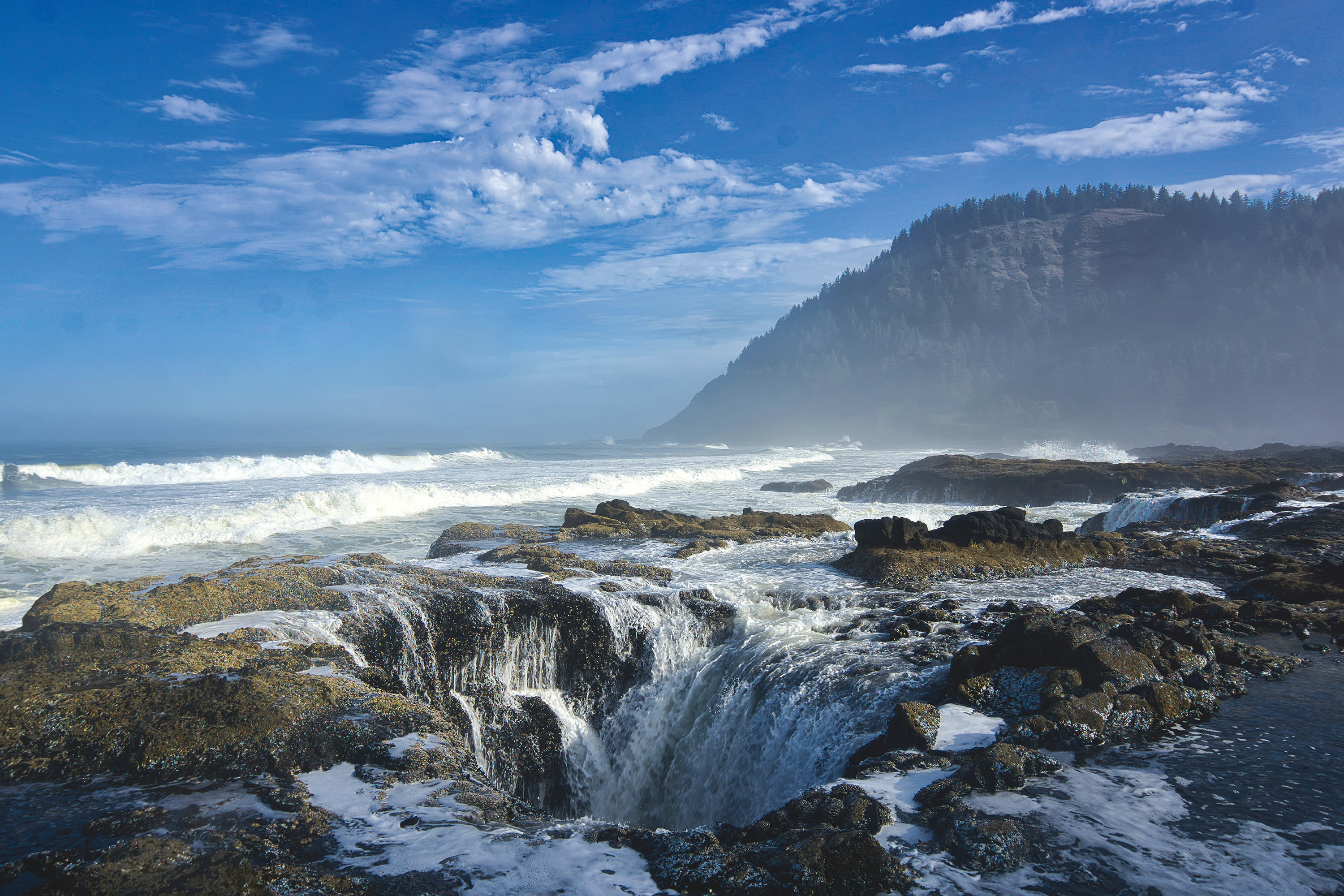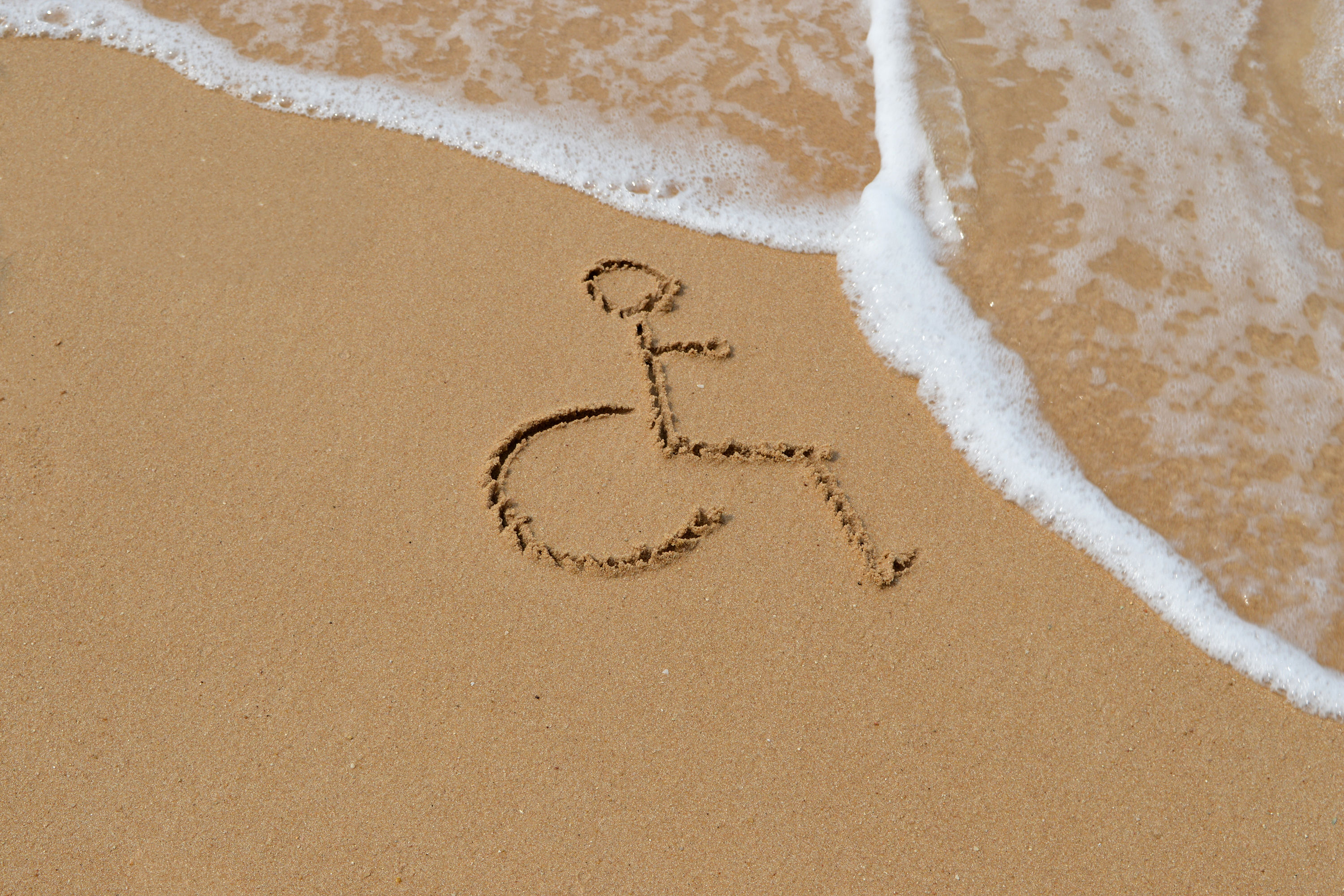The Burly All-Terrain Wheelchairs Rolling Across Oregon’s Beaches
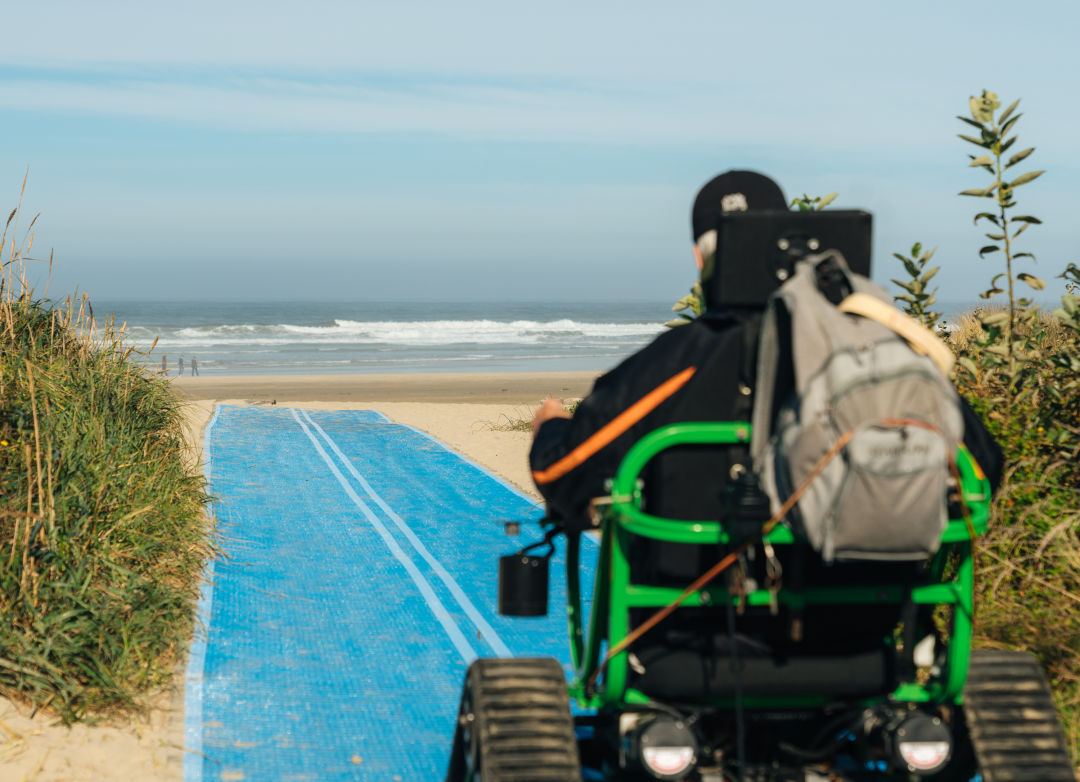
Image: Courtesy Mel Barbour
On a sunny morning at Heceta Beach in Florence, a sturdy, clover green chair with bulldozer-worthy tires crawls along, its treads etching chevron-shaped patterns into the wet sand. Bundled under a blanket in the seat is Jim Novitsky, gripping a frisbee with both hands. It takes him a minute to let go, and the disc wobbles and sails just a few feet. But for Novitsky, who was diagnosed in 2020 with a rare neurological disease, it’s these moments that keep him going.
“I feel at home being by the ocean,” says Novitsky, speeding across the beach. A dedicated amateur geologist and geographer, he likes the breeze on his face and keeps an anemometer in his backpack to measure the wind’s speed. “I look forward to Sundays.”
Sundays are when Jim and Jean Novitsky, his wife of 50 years, leave their home in Eugene for the Oregon Coast, where they have a standing date with one of these electric all-terrain track chairs. The green one is named Kermit. Borrowed from an Oregon nonprofit called David’s Chair, the chair gives Jim freedom to roam independently, Jean a break from caretaking, and the two of them a sense of normalcy. Before Jim’s diagnosis, the two would hike every weekend.
Jean returns the frisbee, then chases her husband toward the surf. Unlike when he used a walker or cane, she doesn’t worry about him getting hurt. “It’s been our salvation,” she says.
Since its founding in 2017, hundreds of people like Jim have used David’s Chair to enjoy the beach at zero cost. The nonprofit is named after David Hartrick, an avid outdoorsman from Medford. After being diagnosed with ALS, Hartrick worked with friends to raise $20,000 to purchase a track chair, which he used on fishing trips to the southern Oregon Coast. Hartrick died 11 months after his diagnosis, and his final wish was that other people would be able to use the chair, too. His friends and family started the organization in his honor.
Over the past three years, David’s Chair has grown from a single chair in Medford to 23 chairs at 17 locations. Most sites in Oregon are along the coast, including in Netarts, Manzanita, Seaside, Newport, and Pacific City. A few chairs are inland; Eugene’s Mount Pisgah Arboretum has two and Ashland’s Lithia Park has one. Washington, Nevada, California, and Texas each have a site. A few spots offer a towing option that allow users to borrow a chair for up to a week.
Through referrals and cold calls, David’s Chair operations manager Jeff Kallevig finds new partners who are willing to store the chairs, fund overhead, and volunteer their time to help users check one out. (He’s currently looking for volunteers and partners in Portland.)
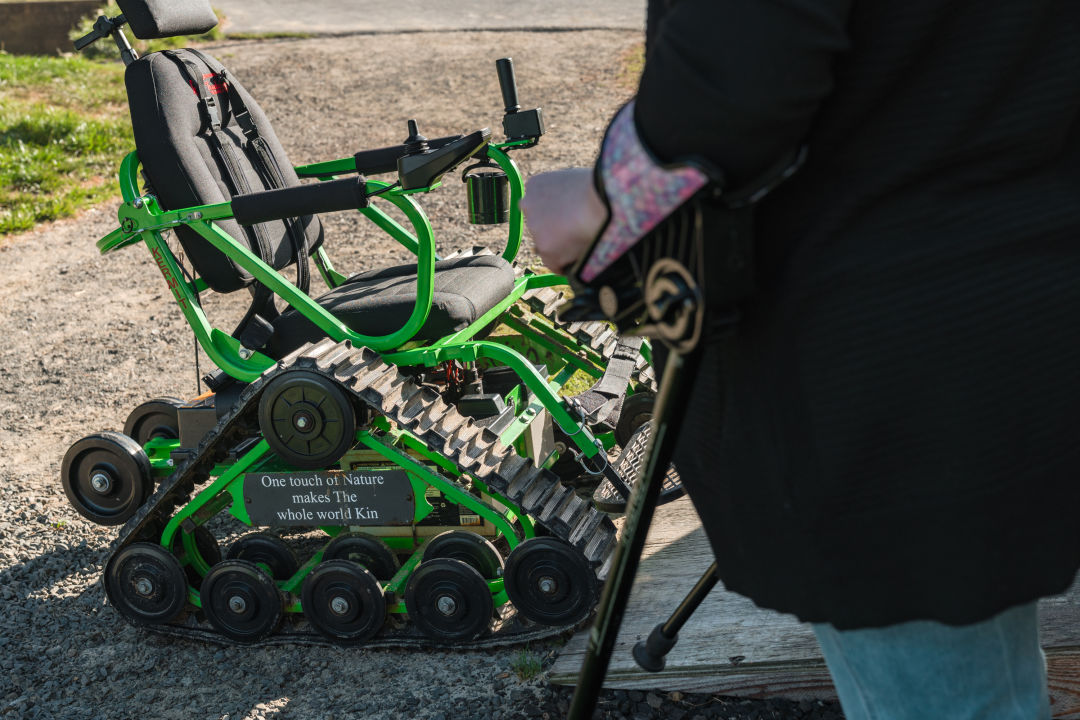
Image: Courtesy Mel Barbour
In Florence, volunteers Phoenix and Paul Plough welcome David’s Chair users. Once they unlock a Tuff Shed behind Driftwood Shores Resort and test that the chair is working, they send people on their way for two hours. Phoenix says families come back with huge smiles.
“I know what it feels like to have so much taken away when you become disabled,” says Phoenix, who started having mobility challenges more than two years ago. (Paul is a disabled veteran.) “A little bit of time out of my week is worth it to give someone else that joy.”
When it comes to accessible and inclusive outdoor recreation destinations, there are few options aside from the coast, the Novitskys say. Beyond the obvious advantage of the beach—flat and wide open as opposed to, say, a rocky trail—coastal communities have made serious investments in accessible and inclusive infrastructure, with funding from Oregon Parks and Recreation and other government and community donors.
In Lincoln City, which has gone all in on improvements, visitors with colorblindness can borrow special glasses that brighten the blue hues of the ocean. At the city’s SW 51st Street beach access point, wheelchair and walker users—even stroller pushers—will find non-slip walkways called Mobi-Mats that make it easier to get on the sand. Within town, construction is underway on a playground that will integrate nonverbal communication boards and gently sloped paths for people of differing abilities and sensitivities.
On a recent visit to Lincoln City with his family, West Livaudais, who survived a spinal cord injury in 2013 and is now executive director of the Oregon Spinal Cord Injury Connection, was delighted to rent a beach wheelchair with supersize tires. His wife pushed him down a Mobi-Mat as he held his 18-month-old on his lap and showed his 4-year-old how to fly a kite.
“We got to enjoy some magic,” Livaudais says. Unlike on past visits, he didn’t have to wait in the parking lot while his family enjoyed themselves on the sand. “We have photos, videos, and memories of that moment because Lincoln City decided to make an investment.”
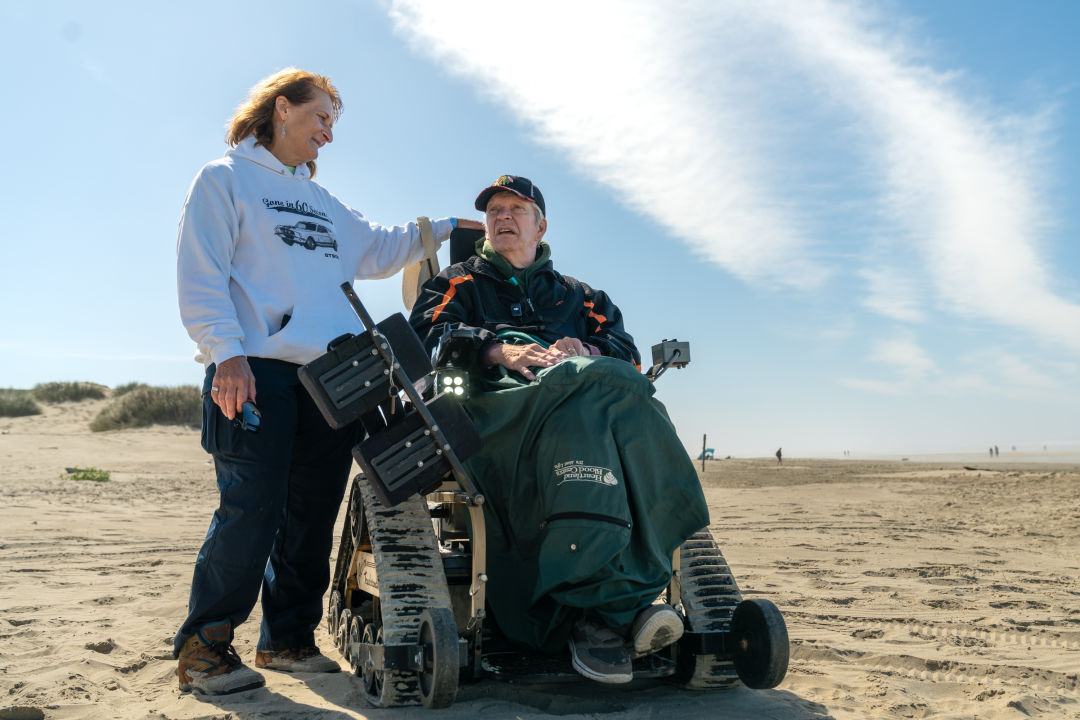
Image: Courtesy Mel Barbour
Other cities along the coast have installed ADA-accessible kayak launches and fishing piers, and ramps to overlooks and boardwalks. National ADA building standards require ramps to have slight grades, handrails, and wide, flat landings. Passageways must have a minimum clearance width of 32 inches. Doors should be operable with one hand, and curbs should have cutouts for wheels. But many businesses and municipalities do the bare minimum, if anything.
The only way to enter many coastal restaurants and stores, often located in old, converted houses, is by stairs, which excludes people who rely on mobility devices. Sidewalks are often narrow or sometimes absent, and boardwalks can be too bumpy to navigate. Even if restrooms have ADA stalls, their doors may be too narrow to enter or heavy to open.
As Kallevig says, ADA guidelines “set a really, really low bar.” Livaudais adds that these infrastructural nuances are still an afterthought for many builders and planners. However, there’s economic gain for destinations like the Oregon Coast that decide to invest. U.S. travelers with disabilities spend nearly $50 billion annually on travel, a 339 percent increase from 2015—and they’d probably spend more if it were easier to get places.
This summer, the Novitskys embarked on a road trip to visit their son in Southern California. Leaving their routines is unsettling: In the past, they’ve showed up to what they thought was an ADA hotel room only to have to scramble to find other lodging. To prepare, Jean called hotels and businesses, and sent her son to check that Jim’s wheelchair would fit through the doorway and be able to turn around in the bathroom. One noteworthy stop along the way was the David’s Chair location on the beach at Redwoods National Park, where they relished in the seaspray.
In familiar territory on Heceta Beach, Jean pulls on her sweatshirt and tucks the blanket tighter around Jim before he speeds away. “I’m gonna go down this road fast, as you can tell,” he says. A breeze blows Jean’s hair. In the distance, Jim pops what looks like a wheelie. Their two hours are almost up, but they’ll be back again next week. “This gives me a reason to go on,” he adds.
